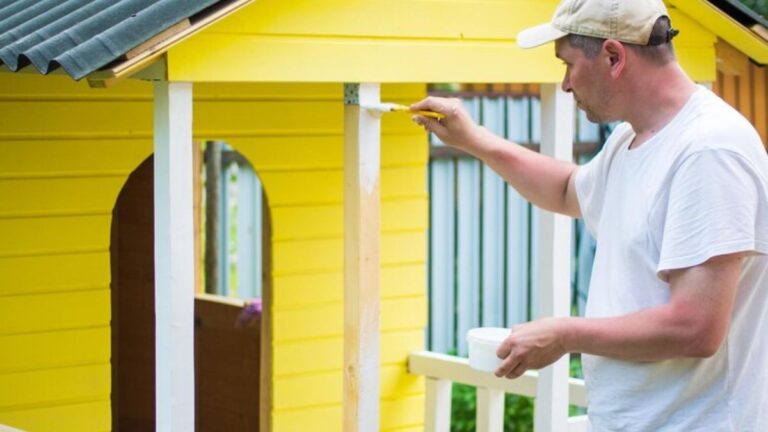Wood is a popular choice for siding, fences, and decks due to its natural beauty and versatility. However, these outdoor structures are constantly exposed to harsh environmental elements, leading to inevitable wear and tear. To maintain their longevity and appearance, it’s essential to protect your wood exteriors properly.
Woodemotions offers the perfect solution with high-quality exterior wood coatings designed to safeguard your wood projects from weather-related damage. Our coatings provide durable protection, enhancing the beauty of your wood while extending its lifespan, ensuring your outdoor structures remain as stunning and resilient as the day they were built.
Choose a durable wood
the first safety step that you can take is to choose a durable wood structure. Wood is naturally vulnerable to pests and decays. However, certain wood types like teak, redwood, and cedar have naturally resistant properties. These can withstand extreme weather conditions. So, the best you can do is to choose a durable wood.
Apply a Wood Sealant
Applying a quality wood sealant to protect the wood exterior is good. Sealants form a protective barrier preventing moisture from penetrating the wood fibres. This helps to reduce the risks of rotting, splitting and warping. Oil and water-based sealants are two common types of sealants used for this purpose. Following the manufacturer’s instructions is important to get the best results.
Use Paint or Stain
Paint and stains not only improve the finish of the wood exterior but also help protect the wood from weather damage. They also provide an opaque, thick layer covering shields and wood from insects, moisture, and UV rays. They also offer excellent protection but require more maintenance after painting and staining.
Both stains and paint protect the wood from external elements, but stains are usually recommended for wood exteriors because they are easy to maintain and apply.
Consider Epoxy for Extra Protection
You can consider applying epoxy to the wood structures to provide better protection. Epoxy forms a tough and waterproof barrier on the surface of the wood. This helps seal cracks and protect the wood from water and UV. Epoxy coatings last longer. You can also use them in harsh weather conditions. Moreover, they also last longer than the rest of the products.
Protect Wood from Moisture
Moisture can badly harm wood structures. When water seeps into the wood, it causes swelling, cracking, and rotting over time. To protect the wood from water, you need to
- Elevate wood structures
- Ensure proper drainage
- Apply waterproofing
Protect Against Sun Damage
Protection from the sun is quite necessary to preserve wood exteriors. The UV rays from the sun can cause the wood structures to crack, dry out and fade. You can apply a UV finish to the wood exteriors. The epoxy usually comes with added UV protection. Buy products that are specifically designed to meet this purpose. You can also consider shade solutions if possible. This adds to the protection of the wood exterior from the sun’s UV rays.
Regular cleaning
Regular cleaning is quite necessary for preserving the wood structures. You need to protect the wood exterior from algae, grime and dirt. This can severely damage the wood exteriors.
The best you can do is to clean with mild soap and water. Use a soft sponge to scrub the surface. Use pressure water for tougher stains. Inspect for damage to preserve the wood structures from further damage.
Schedules maintenance
You need to schedule a maintenance routine for cleaning wood structures once a year. You can reapply paint, sealant, and stain after every three years, depending on the quality of the products used and the weather conditions in your area. You can also replace the damaged wood to avoid further deterioration.
